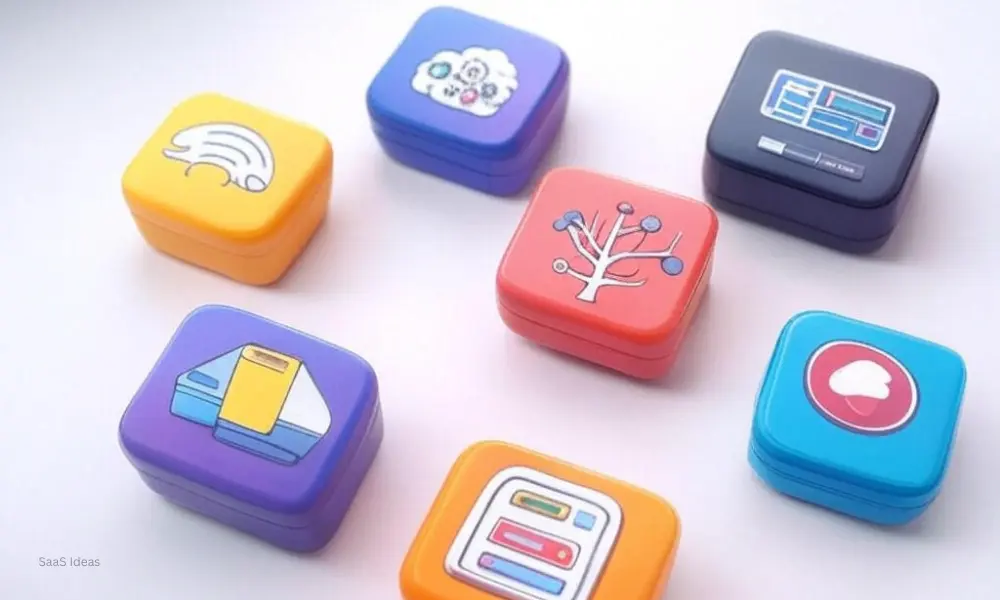Ultimate Guide to SaaS Ideas That Actually Work in 2025

What Is SaaS and Why It’s Booming?
SaaS (Software as a Service) is more than just a buzzword—it’s a business model that delivers software over the internet. Users don’t need to install anything; they just log in and use the service from anywhere, anytime.
Table of Contents
The Rise of Cloud-Based Business Models
With companies focusing on remote work, automation, and scalability, SaaS platforms provide tools that meet modern demands—cloud storage, online collaboration, and more—all on-demand.
Why SaaS Is a Goldmine for Entrepreneurs
The barrier to entry is lower than ever. No need for massive upfront investment. Just a great idea, a solid dev team (or no-code tools), and you’re in business.
Understanding User Intent for SaaS Ideas
Before jumping into building, know your users’ pain points.
What People Look for in a SaaS Product
People want:
- Simplicity
- Speed
- Value for money
- Seamless integration with tools they already use
Solving Real Problems with Simple Software
Focus on solving daily struggles, like managing time, automating repetitive tasks, or improving business workflows.
Profitable SaaS Ideas in 2025
Here’s where we get real. Let’s talk practical, profitable SaaS ideas with actual potential.
Niche Marketplaces for Freelancers
Build a platform for specific freelancers—designers, copywriters, accountants. Connect them with clients, handle invoicing, contracts, and payments.
AI-Powered Writing Assistants
ChatGPT-style writing tools that help with blogging, emails, social media, or resumes. There’s huge demand for content creation automation.
Subscription Analytics Tools
Create a dashboard for businesses to track subscriptions, churn, retention, and customer lifetime value in real time.
Online Course Platforms for Experts
Give creators a platform to sell knowledge. Include quizzes, certificates, live sessions, and community features.
Micro-SaaS Tools for Small Businesses
Focus on one feature: a scheduling app, an invoice generator, a CRM for florists. Niche = Rich.
Remote Team Collaboration Tools
Trello and Slack aren’t enough anymore. Think specialized tools for industries: remote legal teams, architects, or consultants.
Workflow Automation for SMEs
Automate tasks like lead generation, email follow-ups, employee onboarding—all without needing tech skills.
Mental Health SaaS Apps
Provide journaling tools, meditation sessions, or therapy session management for clinics.
Legal Document Automation
Auto-generate NDAs, contracts, and leases. Add digital signatures and storage.
Custom Chatbots for eCommerce
Build drag-and-drop tools for eCommerce stores to deploy smart, branded chatbots without coding.
How to Validate Your SaaS Idea
You don’t need a full product—just validate before building.
Surveying Your Target Audience
Use platforms like Reddit, Indie Hackers, or niche Facebook groups. Ask questions. What’s their biggest frustration?
Creating MVPs to Test Demand
Build a minimum viable product—just the core features—and offer early access to your audience.
Features That Make a SaaS Product Irresistible
It’s not just what you build—it’s how you deliver it.
User-Friendly UI/UX
No one wants to use clunky software. Clean design wins. Keep it intuitive.
Affordable Pricing Plans
Offer tiers: free (for casuals), pro (for regulars), and enterprise (for businesses). Flexibility matters.
Scalable Architecture
Plan to grow. Use tools like AWS or Firebase that grow as your user base grows.
Monetization Strategies for SaaS
You’ve got the product—how will you make money?
Subscription Models
Monthly or yearly billing. Offer discounts for annual plans to lock in customers.
Freemium to Premium Upselling
Give basic features for free, charge for the advanced stuff.
Usage-Based Billing
Charge based on usage—API calls, storage, emails sent, etc. Fair for both you and the user.
Mistakes to Avoid When Launching a SaaS Startup
SaaS is easy to start but easy to mess up too.
Ignoring Market Feedback
Don’t build in a vacuum. Listen to beta users. Iterate based on real-world feedback.
Overbuilding the Product
You don’t need 50 features. Build 3 things that solve 1 big problem.
Final Thoughts on Launching a SaaS in 2025
SaaS isn’t just for techies anymore. If you’ve got an idea, even a small one, there’s a way to bring it to life in 2025. Focus on real problems. Keep things simple. Validate early. Build with care. Launch fast.
With the rise of no-code tools, AI, and niche markets, 2025 is the perfect time to dive into the SaaS space and create something truly valuable. Your next side hustle—or full-blown business—could be one app away.
FAQs
What is the best SaaS idea for beginners?
Start with a Micro-SaaS—a single-purpose tool that solves a small problem in a niche market. It’s easier to manage and market.
Do I need to be a coder to launch a SaaS product?
Not at all! Use no-code platforms like Bubble, Glide, or Webflow. You can build full apps without writing a line of code.
How much money do I need to start a SaaS business?
You can start with as little as $500–$2000, especially if you’re using no-code tools and handling marketing yourself.
What’s the fastest way to validate a SaaS idea?
Launch a landing page with an email opt-in and run paid ads or share it in communities. Measure interest before building.
What are some common SaaS pricing models?
- Monthly/Yearly Subscription
- Freemium
- Usage-Based
- Tiered Pricing






